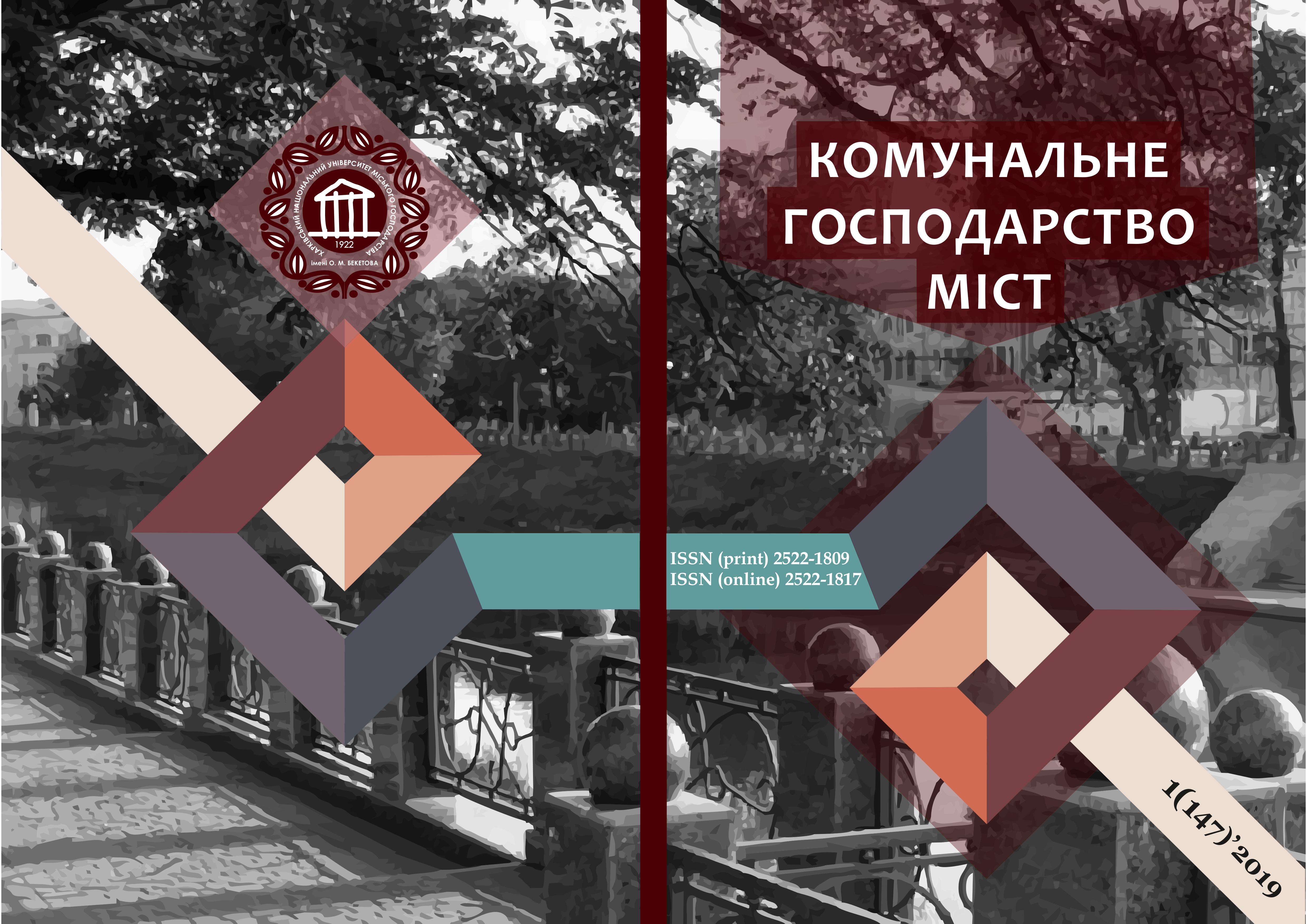ТЕХНОЛОГІЧНІ АСПЕКТИ ПРОЕКТУВАННЯ ДЕФОРМАЦІЙНИХ ШВІВ У БУДІВЛЯХ І СПОРУДАХ
Array
Ключові слова:
деформаційний шов, робочий зазор, ущільнюваний елемент, герметизація, утеплення, спеціальні профілі, шпонки, компресійні ущільнювачіАнотація
Систематизована та проаналізована інформація про існуючі конструкції деформаційних швів, їх переваги, недоліки, обмеження сфери застосування, характерні дефекти. Запропоновано нову класифікацію деформаційних швів і наведено методику вибору деформаційних швів для застосування залежно від різних факторів, що впливають на вибір деформаційних швів. За підсумками дослідження розроблено технологію улаштування деформаційного шва для поліпшення його роботи і зниження вартості.
Посилання
Tortakutyuk, V.I. (1984) Optimization of high-rise building. Kharkiv: Flag, 56.
ДБН В.1.2-2: 2006 * System of reliability and safety of building objects «Load and impacts» Design rules. (2006) Kyiv. MINBUD OF UKRAINE, 75.
British Standards Institution. BS ISO 11600; 2002. Building construction. Jointing products. Classification and requirements for sealants, 16.
Voldjikh, F. (1978) Deformation joints in structures of terrestrial buildings. Per. from the Czechs. M., Stroyizdat, 224.
Nguyen Sao Trung (2011) Deformation joints in the form of elastic-plastic inserts in high-rise buildings of complicated macrostructure: Diss ... Candidate. tech Sciences. St. Petersburg, 122.
Pletnev, V. I., Nguyen Sao Trung (2011) Experimental study of deformation seams of different widths in crosslinkings of buildings of complex macrostructure. The Vestnik of Civil Engineers,1 (26), 55-57.
Osipov, І.А., Zybin, О.А. (2014) Increase of fire resistance limit of deformation seams of building structures with the help of intumessentnoy sealing composition. Engineering Civil Engineering Magazine, 8, 20-24.
Orlovich, R., Zimin, S., Rubtsov, N. (2014) Location vertical extension joints in stone facing of external multi-layer walls of frame-monolithic multi-storey building. Building and reconstructions, 3 (53), 15-20.
Pomazan, M. D. (2009) Principles of designing rational building constructions. Nauk. wisn Bud-va. – Kharkiv: KhTTUBA, KOTV ABU., 54, 134-144. Retrieved from https://tsp.kname.edu.ua/index.php/en/nauka/nashi-publikatsiji.
Kondraschenko, O., Kesariskiy, O. G., Yerokhina, A. V. and others (2014) Patent of Ukraine for utility model 95478 Methods for determining the waterproofness of building materials. Published by 12.25.2014, Bul. 24.
##submission.downloads##
Опубліковано
Як цитувати
Номер
Розділ
Ліцензія
Автори, які публікуються у цьому збірнику, погоджуються з наступними умовами:
- Автори залишають за собою право на авторство своєї роботи та передають журналу право першої публікації цієї роботи на умовах ліцензії CC BY-NC-ND 4.0 (із Зазначенням Авторства – Некомерційна – Без Похідних 4.0 Міжнародна), котра дозволяє іншим особам вільно розповсюджувати опубліковану роботу з обов'язковим посиланням на авторів оригінальної роботи та першу публікацію роботи у цьому журналі.
- Автори мають право укладати самостійні додаткові угоди щодо неексклюзивного розповсюдження роботи у тому вигляді, в якому вона була опублікована цим журналом (наприклад, розміщувати роботу в електронному сховищі установи або публікувати у складі монографії), за умови збереження посилання на першу публікацію роботи у цьому журналі.
- Політика журналу дозволяє і заохочує розміщення авторами в мережі Інтернет (наприклад, у сховищах установ або на особистих веб-сайтах) рукопису роботи, як до подання цього рукопису до редакції, так і під час його редакційного опрацювання, оскільки це сприяє виникненню продуктивної наукової дискусії та позитивно позначається на оперативності та динаміці цитування опублікованої роботи (див. The Effect of Open Access).

